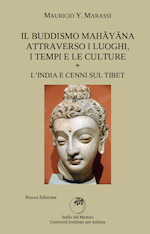Attached is the lecture I delivered at the International Symposium on the “Universality of Buddhism” held at La Gendronnière on June 9, 2007. This Symposium had been convened to celebrate the fourtieth anniversary of the official presence of Sōtō Zen in Europe and to commemorate Rev. Deshimaru Taisen, who came to France in 1967 and took upon himself the duty of teaching and propagating Zen Sōtō. – which he did with sudden extraordinary success. This is the reason why the beginning of Sōtō Zen in Europe is dated to coincide with the arrival of Deshimaru from Japan, while, in reality, Deshimaru was given official recognition by Sōtō Zen only seven years later, in 1974.
It may be useful to recall that, after Deshimaru came to France, the then abbot of Antaiji rejected Deshimaru’s request for his consent to normalize his position within the Sōtō Zen clergy, by providing him with the official entitlements needed to ordain monks. His reason for doing so was that Deshimaru was not prepared to spend in Antaiji the time necessary to ensure that this “normalization” would be both in form and in substance. But in 1974 Rev. Yamada Reirin, abbot of Eiheiji, agreed to normalize Deshimaru’s position in the Sōtō Zen community, thereby allowing him to ordain and, at the same time, sponsoring his candidature for the post of kaikyōsokan, director of Sōtō Zen for Europe. At Deshimaru’s death, in 1982, this position remained vacant until 2002, when Rev. Harada Sekkei, the new director, chose Milan as the new European Headquarters of Sōtō Zen. Since Nov. 2006, these Headquarters are in Paris, and the current (by the end of 2008) director is Rev. Imamura Genshū.

This is the backgound to my address. It is relevant, precisely because la Gendronnière, where the Symposium took place, was slated by Deshimaru to become the hub for the practice and dissemination of zen in Europe. A further and perhaps more important reason is that the intensification of the relations between the Japanese institutional structures of Sōtō Zen and the AZI [Association Zen International, founded by Deshimaru in 1970] could lead to a consensual “Japonization” of European zen Buddhism. It could lead to transferring into Europe the ecclesiastical (liturgical and ritual) forms of Zen that are accepted in Japan – much as they are in good part of Chinese origin – but are completely foreign to the cultural milieu into which they are imported. This process is made easier by the fact that in the European cultural discourse, some of these forms, particularly those related to lithurgy, over the years have undergone a process of universalization and sacralization which has sometimes led to identify them as “the forms of Zen” worthy of preservation and perpetuation in all historical, cultural, anthropological and geographic contexts. With few laudable exceptions, the Japanese clergy have supported or at least not opposed this process. They have done so for a variety of reasons. It is not possible to examine all of them in detail here. However, it is very likely that they comprise the wish to preserve and strengthen their religious institutions and their status outside Japan. Quite often, in addition, one can notice among European practitioners a sort of (inferiority) complex, as if the simple fact of being Japanese and therefore able to master the language and the rituals developed in Japan by the Sōtō Zen church, was in and of itself a reason for prestige. The combine effect of these two factors may risk creating a sort of ethno-religious colonialism. From the religious point of view, this trend is wrong in method and substance.

In addition, as is known, and as Rev. Yokoyama Taiken, in his address at the International Symposium, has reminded us, most of the clergy in Japan have become priests not as a result of an authentic religious vocation, but because they are the sons of other clergy and therefore are chosen to by their family to inherit the – often profitable – post of priest in the family temple. Position which, usually, consists in the administration of ritual services for the dead and does require a good mastery of the ceremonial. This is why, knowing and fearing what I have just expanded on, I have decided to draft a presentation that may contribute to show the way for a possible alternative to this trend, a programme that aims to delicately snatch zen Buddhism away from the sino-japanese stifling embrace and allow it to revive with Western features, fresh and new, free of the heavy legacy constituted by material, nationalistic, cultural and ethnic interests. This not only because this for “him” (“it”? “her”?) is a new culture, but also because each human being is special and unique. I wanted to keep open the possibility that zen may find its way in the body of our culture, for which differences among persons and the very concept of “person” are constitutive principles.

The “Ratisbona address”
My presentation is also the beginning of a series of reflections that I hope to be able to carry on in the future, on the well-known address by Benedict XVI at Ratisbona. In particular, I am thinking of that part of the speech in which he commented on the inculturation of Christianity and on its dialogue with other religions. I think that my conference began to highlight what is deeply different between zen and Christianity as this is described by the current Pope. While in his view Christianity cannot do without the Greek culture that contributed to shaping it, the Buddhism I speak of is free of Indian inculturation. It can do without its original breeding ground and can be born again within a mature culture without losing any of its essence. By the way, I am very happy that this point of view was also very well expressed by a great Christian of the past century, Thomas Merton, when he wrote: “Zen cannot be classified as a “religion” (it can infact be separated from any religion and could flourish in the ground of non-buddhist religions or infact, of no religion at all) and in any case it tries, like all forms of Buddhism, to make man totally free and independent, even in his efforts towards redemption and enlightenment” (Cf.Thomas Merton, Zen and the birds of appetite, The Abbey of Gethsemany, Inc. 1968)
Fano, 27 June 2007
Mauricio Yūshin Marassi
Se volete, lasciate un commento.
You must be logged in to post a comment.







